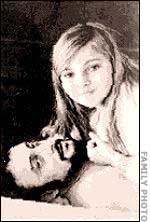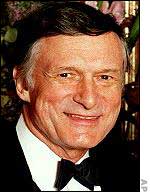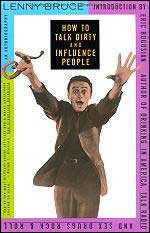Following the near-miss in Miami, Lenny Bruce and his wife moved to Pittsburgh, where he took another stab at show business. The act he had worked up with Honey died, and that meant Lenny had to rely on his own instincts, which ultimately led him to develop a kind of strip-club comedy -- sometimes biting, sometimes incisive, always edgy.
By 1957, Bruce had started to make a name for himself, but not as a guy slinging mother-in-law jokes in nightclubs. In his years as a journeyman comic, Bruce had been drawn to the other outcasts of the entertainment world, jazz musicians and the decadently alluring world of illicit drugs. The way Goldman tells it, drugs became a passion, not just for Lenny Bruce but also for his wife. Lenny, Goldman argues, was convinced, despite his gargantuan intake, that he was not an addict, though he was far less tolerant when it came to Honey. In fact, some - including Honey - confided to the authors that they suspect Lenny Bruce engineered his wife's arrest in Hawaii on drug charges in 1956, less than a year after Kitty was born.
 |
| Lenny Bruce with daughter Kitty |
While Honey Bruce was in prison, Lenny Bruce's career really began to smolder. By the late 1950s, Bruce was beginning to gain a loyal base of fans who seemed to exist in that netherworld between Beatniks and intellectuals. He seemed to realize that he was working on the edge - for example, on one occasion at a Los Angeles strip club, he bounded onstage naked except for a pair of black socks, a move that would have bordered on lunacy in the late Eisenhower era.
 |
| Hugh Hefner |
But he was also attracting attention. Hugh Hefner, at the time the godfather of all things hip, was one of the first to recognize Bruce's edgy genius, and he helped engineer not only the comic's big appearances in Chicago, but also helped him develop and promote his autobiography, "How to Talk Dirt and Influence People."
 |
| How to Talk Dirty and Influence People |
Bruce even flirted with the mass media. Steve Allen, then the host of the Tonight Show and a man who was well-suited to bridge the yawning chasm between the hip underground and
middle America, was one of the few popular entertainers who was willing to give Lenny Bruce a shot at the whole country.
 |
| Steve Allen |
He did it, of course, with some trepidation.
If you ever want to consider the courage it took for Allen to put Lenny Bruce on TV at a time when most Americans thought Howdy Doody was cutting-edge, you need only study Allen's introduction of him. As recounted by Goldman, it went like this:
"We get a great deal of mail from our viewers commenting on our sketches (heh, heh, heh!) indicating their likes and dislikes, and whether you realize it or not, there is just about no joke or sketch, particularly of a satirical sort, that will not offend somebody - a cowboy or a drunk - I don't want to equate those two; already I can see the cards coming in!
"Here is how we are going to face the problem - we have decided that once a month we will book a comedian who will offend everybody. Then we'll get it overwith, see? A man who will disturb a great many social groups - I'm serious - his satirical comments refer to things not ordinarily discussed on television. It serves you right...So, ladies and gentlemen, here's the very shocking comedian, the most shocking comedian of our time, a young man who is skyrocketing to fame, Lenny Bruce!"
That night, Bruce played it straight. He made one joke - at Elizabeth Taylor's expense - that by the standards of the time might have seemed a bit provocative, but there was nothing obscene, nothing unseemly, nothing particularly offensive about his act.
A few months later, he appeared on the Tonight Show a second -- and last -- time. Perhaps, Goldman speculates in his book, the powers that be at NBC felt they had dodged a bullet but weren't about to tempt fate a third time.
There would, of course, be other television appearances for Bruce, including an appearance on Playboy After Dark. But for the most part, the remainder of Bruce's career would take place in nightclubs, the occasional theater, and courtrooms.



